 W
WBanca Antonveneta S.p.A. was an Italian bank based in Padua, Italy. The bank was absorbed into Banca Monte dei Paschi di Siena in 2013.
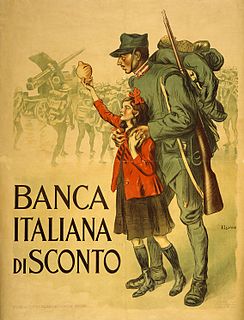 W
WThe Banca Italiana di Sconto (BIS) was a leading Italian bank that went bust in 1921. One firm hit by its collapse was the giant film production conglomerate Unione Cinematografica Italiana (UCI), which itself folded a few years later. Another victim was Banca per l'Africa Orientale (BAO) whose formation in 1917 BIS had promoted. BAO failed in 1923.
 W
WThe Banca Nazionale dell'Agricoltura or BNA, was an Italian bank that existed from 1921 to 2000.
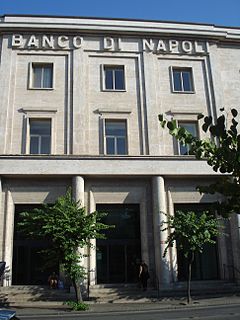 W
WBanco di Napoli S.p.A., among the oldest banks in the world, was an Italian banking subsidiary of Intesa Sanpaolo group, as one of the 6 retail brands other than "Intesa Sanpaolo". It was acquired by the Italian banking group Sanpaolo IMI in 2002 and ceased being an independent bank. In February 2018, Intesa Sanpaolo announced their new business plan, which would retire Banco di Napoli and other brands; the legal person of Banco di Napoli would be absorbed into Intesa Sanpaolo S.p.A.
 W
WThe Bank of the Holy Spirit was a bank founded by Pope Paul V on December 13, 1605. The bank was the first national bank in Europe, the first public deposit bank in Rome, and the oldest continuously operating bank in Rome until its merger in 1992.
 W
WBanco di Sicilia was an Italian bank based in Palermo, Sicily. It was a subsidiary of UniCredit but absorbed into the parent company in 2010.
 W
WThe Bank of Saint George was a financial institution of the Republic of Genoa. It was founded in 1407 to consolidate the public debt, which had been escalating due to the war with Venice for trading and financial dominance. The Bank's primary mission was to facilitate the management of the San Giorgio shares (luoghi). It was one of the oldest chartered banks in Europe and of the world. The Bank's headquarters were at the Palazzo San Giorgio, which was built in the 13th century by order of Guglielmo Boccanegra, uncle of Simone Boccanegra, the first Doge of Genoa.
 W
WThe Bank of Venice was the first national bank to have been established within the boundaries of Europe. The first bank was established in Venice with guarantee from the State in 1157.
 W
WCassa di Risparmio della Marca Trivigiana also known as Cassamarca in short, was an Italian savings bank headquartered in Treviso, Veneto. Due to Legge Amato, the bank was split into two organizations: Cassamarca S.p.A. and Fondazione Cassamarca – Cassa di Risparmio della Marca Trivigiana in 1992. The S.p.A. and the banking foundation were the founders of banking group Unicredito in 1994, a predecessor of UniCredit. The S.p.A. was absorbed into UniCredit in 2002; the banking foundation, survived as a charity organization, as well as owned 0.23% shares of UniCredit, as one of its investments.
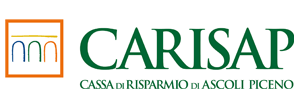 W
WCassa di Risparmio di Ascoli Piceno known as Carisap, is a former Italian regional bank based in Ascoli Piceno, Marche. A subsidiary of Intesa Sanpaolo, the bank merged with another subsidiary of the group, Banca dell'Adriatico in 2013.
 W
WCassa di Risparmio di Cesena S.p.A. also known as Carisp Cesena in short, was an Italian savings bank based in Cesena, in the province of Forlì-Cesena, Emilia-Romagna region.
 W
WBanca dell'Umbria 1462 S.p.A. or previously known as Cassa di Risparmio di Perugia was an Italian savings bank. The bank became a subsidiary of UniCredit in 1999 and ceased to exist in 2005. However, its former owner Fondazione Cassa di Risparmio di Perugia, still operated as a charity organization. The foundation and the S.p.A. were split in 1992 from the original statutory corporation of the bank due to Legge Amato.
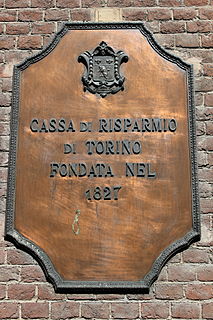 W
WBanca Cassa di Risparmio di Torino S.p.A. known as Banca CRT, or Caritorino, was an Italian savings bank based in Turin, Piedmont. In 1997, the bank joined Unicredito banking group, as well as in 1998 followed the group to merge with Credito Italiano to form UniCredito Italiano. In 2002 Banca CRT was absorbed into the parent company.
 W
WCredito Italiano also known as just Credit, was an Italian bank, now part of UniCredit. It was merged with Unicredito in 1998, forming Unicredito Italiano. Circa 1999 to 2002 UniCredit created a new subsidiary of the same name to run the retail network of Credito Italiano. On 1 July 2002 the subsidiary received the assets of sister banks to become UniCredit Banca.
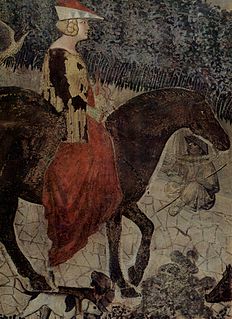 W
WDuring the Middle Ages, the Gran Tavola was the largest Sienese bank; it was one of the most powerful banks in Europe from 1255 to 1298. The Gran Tavola has been called "the greatest bank of the thirteenth century" as well as "one of the largest commercial and banking enterprises in Europe".
 W
WIstituto Bancario San Paolo di Torino S.p.A., commonly known as just San Paolo, was an Italian bank. It was headquartered in Turin, Piedmont. The bank is the predecessor of Sanpaolo IMI, as well as the current largest bank in Italy in terms of total assets, Intesa Sanpaolo. The former owner of San Paolo bank, Compagnia di San Paolo, still significantly owned Intesa Sanpaolo.
 W
WThe Medici Bank was a financial institution created by the Medici family in Italy during the 15th century (1397–1494). It was the largest and most respected bank in Europe during its prime. There are some estimates that the Medici family was, for a period of time, the wealthiest family in Europe. Estimating their wealth in today's money is difficult and imprecise, considering that they owned art, land, and gold. With this monetary wealth, the family acquired political power initially in Florence, and later in the wider spheres of Italy and Europe.
 W
WMonte di Credito su Pegno di Vicenza was an Italian bank based in Vicenza. It was originated as a mount of piety known as Monte di Pietà di Vicenza. Due to Legge Amato, the legal person of the bank spin off its banking business as a società per azioni in 1995, and sold the business to Cariverona Banca in 1996; the original legal person of the bank became Fondazione Monte di Pietà di Vicenza. The bank was known for its headquarters, Palazzo del Monte di Pietà in the Piazza dei Signori.
 W
WMPS Finance (MPSF) was founded in 2001 and is the finance sub-division of the Banca Monte dei Paschi di Siena. MPS Finance was set up to be one of the "center of excellence" of Monte dei Paschi di Siena Group. Operating on two macro-platforms, MPS Finance performs the typical Investment Banking activity and, at the same time, is a product factory which creates and places a whole range of financial products and services for both corporate and retail customers; there are more than 4.500.000 customers who can buy the products created by MPS Finance in the retail banks, which are more than 2000 in Italy.
 W
WThe Peruzzi were bankers of Florence, among the leading families of the city in the 14th century, before the rise to prominence of the Medici. Their modest antecedents stretched back to the mid 11th century, according to the family's genealogist Luigi Passerini, but a restructuring of the Peruzzi company in 1300, with an infusion of outside capital, marked the start of a quarter-century of prosperity that brought the family consortium to the forefront of Florentine affairs.
 W
WSanpaolo IMI S.p.A. was an Italian banking and insurance conglomerate, based in Turin. It employed about 44,000 people and had about 7 million customers.